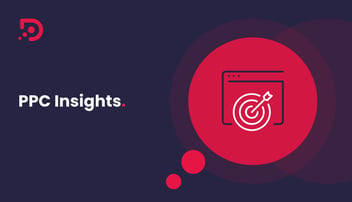It’s fairly safe to say that the world turned upside down in 2020. Workforces were laid off, and industries ground to a halt. Orthodoxies made irrelevant.
Now as the world finds its feet again, we need to reevaluate the old methods. To look again at what works and what doesn’t, to ensure we can continue to deliver value in this new normal.
To this end, we present you with the DMS 2022 Social Media Stats Report. A comprehensive roundup of leading industry research (names like HubSpot, Hootsuite, and Statista to name but a few).
What You’ll Find Here
There are a million blog posts with social media statistics - why is ours different?
Short answer: we’ve paired the stats with useful, actionable insights.
They look like this:
|
💡 An example insight |
This means that instead of reading a bunch of statistics with no context or relevance, you’re reading a curated collection that can have real, noticeable impacts on your social strategy.
Social Media Stats 2022
It’s the year that Facebook’s dominance is starting to waver, and Mark Zuckerburg is turning his attention to virtual reality instead. Twitter is still a tumultuous place, even after they took the surprising decision to ban Donald Trump (who has now opened his own platform, the questionably named Truth Social). TikTok has replaced Snapchat as the favourite of the younger generation and is forecast to be the third biggest platform by 2023 (source).
What’s the Big Picture with Social Media?
There were 4.2 billion active social media users in January 2022 (source), which is over half the world’s population (source).
In the UK there were 60.37 million active social media users in December 2021 (source), about 1.5% of the global total.
In Australia, a huge 64.53% of the population will use social media in 2022 (source).
Globally, social media is the most common primary approach to marketing (source).
More than 80% of companies invested in social media marketing last year (source).
|
💡 Such deep global penetration shows that leaving social media out of your digital marketing strategy is a risky move, while such an enormous prospective audience speaks to the need for a considered, strategic approach. |
How Much Are Businesses Spending on Social Media?
In 2021 total global social media ad spend was $154 billion (source).
This is forecast to rise to $174 billion in 2022 (source).
Europe is responsible for $16.1 billion of this spend, and the UK is the biggest spender (source).
The UK was forecast to spend $9 billion on social media advertising in 2021: a figure higher than its five closest competitors - including Germany and France - combined (source).
|
💡 The UK is a big player in social media advertising, meaning you’re up against strong competition. Working with social media experts is a way to remove the guesswork from your strategy, moving straight to the success. |
Where is Social Media Budget Being Spent?
Social media ads account for roughly one-third (33.1%) of total digital spending (source) and are second only to search ads in total spend (source).
Total ad spend is forecast to be $173 million in 2022 (source), with over 45% of brands planning to increase their spend on some combination of Facebook, Instagram and LinkedIn (source).
More spend doesn’t automatically mean more results, though. For instance, in Q2 of 2021, Fortune 500 companies posted 200% more Instagram posts and 133% more videos, but engagement only increased 9% (source).
Compare this to Twitter, which saw 263% more engagement with increased posting activity of just 17% (22% for videos) (source).
|
💡 More spend and/or higher activity doesn’t always equal more engagement. A strategic approach with thorough planning, detailed reporting, and refinement based on ongoing analysis is crucial. |
How has the Covid Pandemic Affected Social Media Spend?
In 2020 in Europe, social media ad spend grew 16% YOY during the pandemic (source).
The rate of increase in ad spend slowed between 2018/19 and 2019/20, but overall spend continued to increase (source):
- 2018/19 saw a 34% increase with a total spend of $28.85 billion
- 2019/20 saw a 25.5% increase with a total spend of $36.22 billion
- 2020/21 saw just an 11.4% increase with a total spend of $40.34 billion
|
💡 It’s clear that social media is embedded deep enough in our lives that it remains a worthwhile investment even in uncertain times. |
Which Social Media Channels Are Businesses Using?
Instagram and Facebook tussle for the top spot, featuring in the social media strategies of ~80% of companies (source).
Twitter and YouTube follow shortly after, being present in about 60% of strategies (source).
LinkedIn is used by about 40% of companies (source), although if you look just at B2B social media marketing, more than 90% of companies use the platform for organic social marketing (source).
The platform is the largest B2B display advertiser, with 32.3% of US ads (source).
Snapchat, Pinterest and Tumblr trail behind (source).
|
💡 A one-size-fits-all strategy will not work on social media, whether in paid or unpaid campaigns. Understanding the nuances of each platform and its audience can make the difference between success and failure. |
How Are People Spending Time on Social Media?
Of the 4.2 billion active social media users in January 2022, 4.15 billion of these were active on mobile (source).
Looking at a specific platform, desktop usage of Facebook lags far beyond mobile: only 1.7% of users will only access via their laptop or desktop, compared to 98.3% on any kind of mobile device (source).
|
💡 It shouldn’t be news to anyone that mobile is dominant in 2022, although you’d be surprised how many B2B marketing strategies don’t reflect this! |
Which Tactics Are Being Used in Social Media Strategies?
Social listening is the most commonly used social media marketing tactic at 62% (source).
Hashtags follow at 48%, with live video and augmented reality coming in next at 46% and 19%, respectively (source).
Surprisingly, traditional static display ads continue to outperform video ads on social media platforms (source).
Innovative formats continue to drive success: multi-direction carousel ads on Twitter are an example, driving more than 20% higher conversions (source).
|
💡 Knowing which tactic/s are more likely to resonate with your audience lets you allocate spend more effectively, and helps to avoid a “see what sticks” approach. |
Summary:
- Social media usage increased during the pandemic, making these platforms one of the most reliable ways to secure reach
- Companies looking to take advantage of this reach prioritise social and allocate more budget
- While the rate of increase of ad spend dropped, overall ad spend is up
- Having a strategic social media presence is a crucial part of an effective, impactful marketing strategy, for B2B and B2C businesses.




